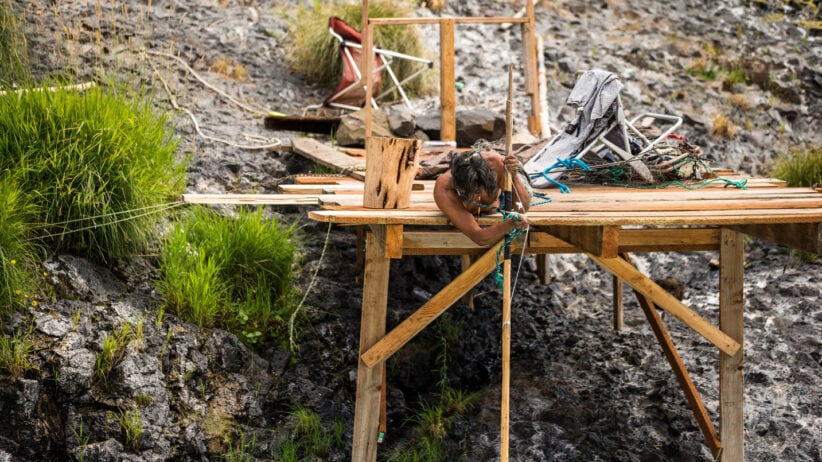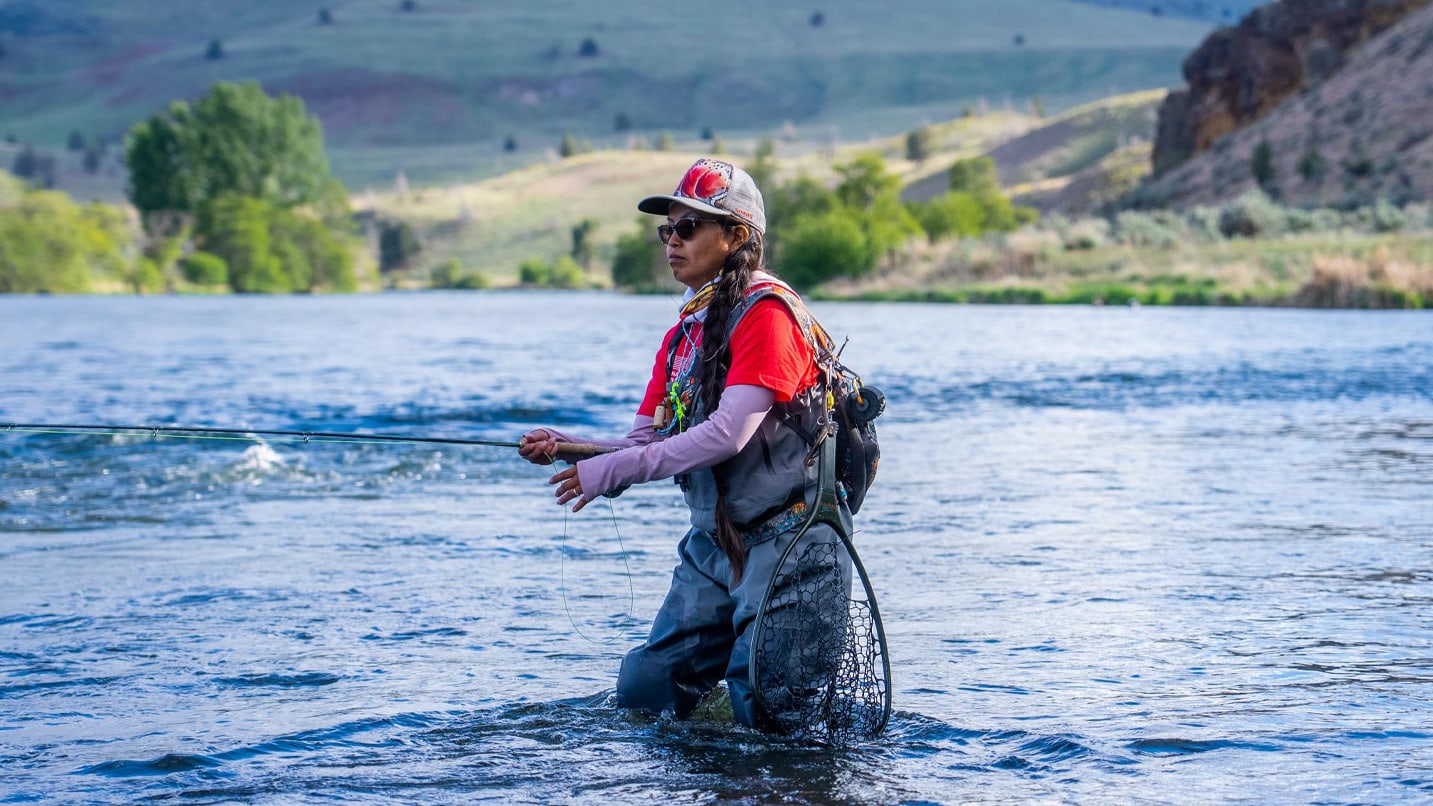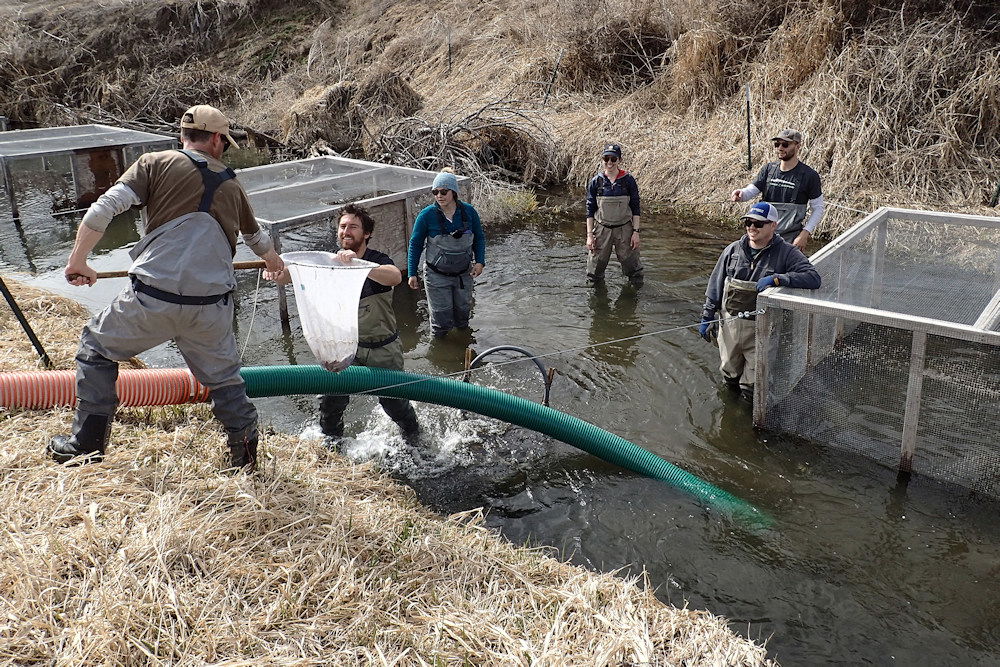
The Enduring Current: Warm Springs Tribes and the Sacred Salmon
WARM SPRINGS, OREGON – The Columbia River, a colossal artery of the Pacific Northwest, pulses with a lifeblood far older than any human settlement. For the Confederated Tribes of Warm Springs, comprising the Wasco, Sahaptin, and Paiute peoples, this river and its most iconic inhabitant, the salmon, are not merely resources; they are the very essence of their identity, their history, and their future. Here, amidst the rugged beauty of the high desert and the whispering pines, the ancient practice of salmon fishing endures, a testament to resilience, sovereignty, and an unbreakable bond with the natural world.
The air along the riverbanks still carries the faint, ancestral scent of woodsmoke and drying fish, a memory of countless generations. Today, tribal members continue to cast their dipnets from precarious wooden platforms, just as their ancestors did for millennia. But this age-old tradition is now a daily act of defiance and a powerful assertion of treaty rights, fought for and won against overwhelming odds.

A Sacred Abundance: Before the Dams
Before the dawn of the 20th century, the Columbia River Basin teemed with salmon. Millions of fish, from Chinook to Coho, Sockeye to Steelhead, surged upstream each year, returning to their natal streams to spawn. At the heart of this abundance lay Celilo Falls, known as Wyam to the Sahaptin people – a roaring, churning cataract that served as the greatest fishing ground and trading hub in North America. For the Warm Springs people and other Columbia River tribes, Celilo was more than just a place to fish; it was a spiritual nexus, a vibrant marketplace, and the very foundation of their subsistence economy and social structure.
"Our elders tell stories of Celilo where the fish were so plentiful, you could walk across the river on their backs," recounts Silas Johnson, a Warm Springs elder with eyes that hold the wisdom of generations. "It was a sacred place, a gift from the Creator. We never took more than we needed, and we always gave thanks."
The tribes developed sophisticated fishing techniques, including dipnetting from platforms built into the rock, spearing, and intricate weir systems. Their knowledge of the salmon’s lifecycle, the river’s currents, and sustainable harvesting practices was unparalleled. This profound connection was codified in the Treaty of 1855, signed between the Confederated Tribes of Warm Springs and the U.S. government. In exchange for vast tracts of land, the tribes reserved, among other rights, "the exclusive right of taking fish in the streams running through and bounding said reservation," and "also the right of taking fish at all usual and accustomed places, in common with citizens of the Territory." This clause, seemingly simple, would become the bedrock of decades of legal battles.
The Catastrophe: Silencing the Falls
The mid-20th century brought an era of unparalleled destruction to this ancient way of life. The burgeoning industrial needs of a growing nation demanded cheap power and flood control. The Columbia River was transformed into a series of dams, culminating in the construction of the Dalles Dam. In 1957, with a single, irreversible act, Celilo Falls was submerged beneath the rising waters of Lake Celilo.
The impact was catastrophic. Celilo Falls, the spiritual heart and economic engine of the river tribes, was gone. More devastatingly, the Grand Coulee and Chief Joseph Dams, built further upstream, were constructed without fish ladders, effectively blocking salmon passage to over a thousand miles of pristine spawning habitat. Entire salmon runs were annihilated.
"It was like a knife to our soul," remembers Martha Greenleaf, a Warm Springs tribal historian. "Not just the loss of the falls, but the loss of the fish. Our lifeway was severed. Our people, who had always been self-sufficient through the salmon, were suddenly reliant on the government, on commodities. It was a cultural genocide."

The physical loss was compounded by profound spiritual and psychological trauma. Generations of knowledge, ceremonies, and communal practices centered around the salmon were suddenly rendered irrelevant. Poverty and despair swept through the tribal communities.
The Long Fight Back: Reclaiming Sovereignty
Despite the immense hardship, the Warm Springs people and other treaty tribes refused to abandon their birthright. The "usual and accustomed places" clause of the 1855 treaty became the cornerstone of a protracted legal struggle to reclaim their fishing rights and, by extension, their sovereignty.
Landmark court cases, such as Sohappy v. Smith (1969) and United States v. Oregon (1974), affirmed the tribes’ status as co-managers of the Columbia River fisheries. These rulings recognized the tribes’ inherent right to a share of the harvest and their unique role in the conservation and management of the resource. This wasn’t merely about subsistence; it was about the affirmation of a distinct sovereign identity and the right to self-determination.
"Those court cases weren’t just about fish," explains Chairman Raymond T. Johnson of the Confederated Tribes of Warm Springs. "They were about who we are. They were about honoring the promises made in the treaties, about our right to exist as a people, tied to this land and these waters. The salmon is our relative, and we have a sacred duty to protect them."
This legal victory paved the way for the tribes to re-establish fishing access points, manage their own fisheries, and engage in habitat restoration efforts. While the grandeur of Celilo Falls is gone, tribal members now fish from new platforms constructed at sites like Sherars Falls on the Deschutes River, a tributary of the Columbia, and at designated in-lieu sites along the mainstem Columbia.
The Enduring Tradition: A Way of Life Renewed
Today, the scene at a tribal fishing platform is a living tableau of cultural continuity. Men and women, often working together, stand patiently on wooden scaffolds suspended over the churning water. They wield long-handled dipnets, meticulously woven, sometimes by hand, from durable fibers. The rhythmic dip and lift, the watchful waiting, the sudden flurry of activity when a silver flash appears in the net – it is a dance passed down through generations.
"It’s more than just a technique; it’s a feeling," says Sarah Whitefeather, a young Warm Springs woman learning to dipnet from her uncle. "You have to feel the river, anticipate the fish. My uncle taught me how to read the water, where the salmon will rest, how to feel their presence even before you see them. It connects you to everything that came before."
Once caught, the salmon are treated with immense respect. Traditional processing methods – filleting, smoking over alder wood, and drying – are still practiced. The distinct flavor of traditionally smoked salmon is a taste of history, a culinary link to the past. These methods ensure the fish can be preserved for the colder months, echoing the seasonal cycles of their ancestors.
The First Salmon Ceremony, held each spring, is a profound ritual of gratitude and renewal. The first fish caught is honored, shared communally, and its bones are returned to the river, ensuring its spirit can return to the ocean and guide future generations of salmon back home. It is a powerful reminder that the relationship is one of reciprocal respect, not mere extraction.
Modern Challenges and the Path Forward
Despite the hard-won victories, the Warm Springs Tribes and their salmon face a gauntlet of modern challenges. Climate change poses an existential threat, with warmer river temperatures stressing fish and making them more susceptible to disease. Lower flows impact spawning grounds, and ocean acidification affects their food sources. Habitat degradation from logging, agriculture, and urbanization continues to plague the river system.
The ongoing presence of the federal dams remains a contentious issue. While the tribes have achieved co-management, they advocate tirelessly for better fish passage solutions, dam breaching, or removal where feasible, and increased investment in wild salmon recovery. Tribal fish hatcheries, though sometimes controversial, play a crucial role in supplementing wild runs, ensuring there are fish for both sustenance and ceremony.
The Confederated Tribes of Warm Springs are at the forefront of conservation efforts, investing significant resources in habitat restoration projects, scientific research, and educational programs. They collaborate with federal and state agencies, though often from a position of advocacy, pushing for policies that prioritize the health of the river and its fish over competing interests.
"Our fight isn’t over," states Chairman Johnson. "We continue to educate, to advocate, to protect. We teach our children not just how to fish, but why we fish. We teach them about the sacrifices made by our ancestors, and the responsibility they now carry. The salmon is our barometer. As long as the salmon are healthy, we are healthy."
The enduring current of the Columbia River reflects the indomitable spirit of the Warm Springs people. Their traditional salmon fishing is more than a cultural artifact; it is a living, breathing testament to a relationship forged over millennia, a symbol of resistance against historical trauma, and a beacon of hope for a future where humanity and nature can thrive in sacred harmony. The silver flash of a salmon leaping upstream, the patient wait of the dipnetter, the scent of woodsmoke on the wind – these are not just scenes from a bygone era, but the vibrant heartbeat of a culture that refuses to be silenced.


